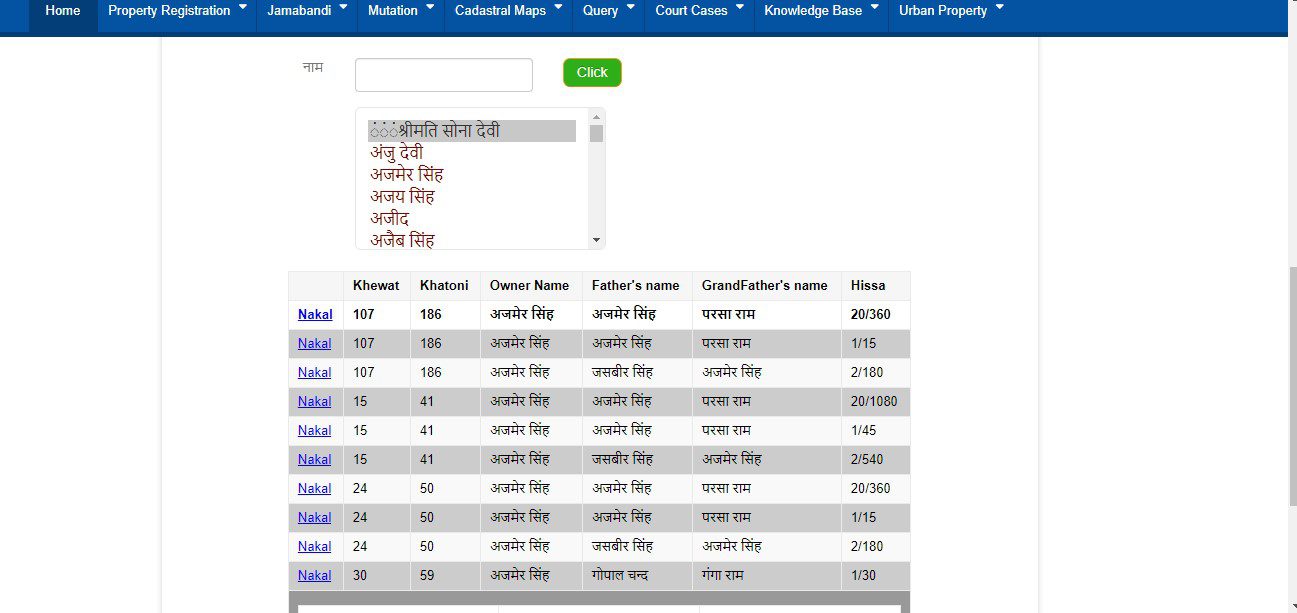Table of Contents
- Khasra number: The meaning
- Khasra number: Importance
- Difference between Khasra number and Khata number
- Who assigns the khasra number?
- What is Khata number?
- What is Khewat number?
- What is Khatauni number?
- What information will Khata, Khasra and Khatauni numbers provide
- How to find Khasra number/Khata number/Khatauni number?
- List of states where you can find Khasra number/Khata number/Khatauni number details online
- Khata, Khasra, Khatauni example
- FAQs
What is Khasra (ख़सरा) and how is it different from Khatauni (खतौनी)?
What is Khata number (खाता नम्बर) and is it the same as Khewat (खेवट)?
Terms like these would come your way when you study land records in India. This is because land records in India were first organised by the Mughals, in order to levy taxes and generate revenue. Consequently, land records widely carry terms of Persian and Arabic origins. While improvements have been made in land record keeping since then, the terms are very much an integral part of the revenue and legal system even today.
See also: Commonly used land and revenue record terms in India
Explained below is Khasra (ख़सरा), a term you would often come across when you try to access land records – online or offline. Also explained is how this term is different from Khata number and Khatauni and how to find your land record using the Khasra number.
Khasra number: The meaning
As plot numbers are assigned to each piece of land in urban India, a similar numeral identification is assigned to agricultural land in rural areas. Authorities take the village map and assign a khasra number to each and every land parcel in that particular village.
At this juncture, it becomes pertinent to mention that event though the English spelling for the two words are exactly the same, the term ख़सरा should not be confused with खसरा, the Hindi term used to denote the measles, a highly contagious virus-induced disease.
Khasra number: Importance
In March 2020, a total of 300 police personnel arrived at a specific location in Haryana’s Fatehabad area to get a property vacated, following a court order. They were, however, forced to leave the premise without getting the task done, because of an error with regard to the Khasra number. This instance indicates the importance of the Khasra number, an identity provided to land parcels and plots in India.
Difference between Khasra number and Khata number
The Khasra number is among the many details that are maintained across Indian states under records of rights, popularly known as Jamabandi or Fard. Apart from Khasra number, RoR also has details about the owner, mortgages, leases, crop details and cultivator’s details.
A Persian term, Khasra number is a plot or survey number given to a particular piece of land in villages. In urban areas, land parcels are allotted plot numbers or survey numbers, the equivalent of rural areas’ Khasra number. The land parcels might have several owners.
Khasras provide every detail pertaining to all the fields and their areas, measurement, details of owners and cultivators, type of crops and soil, etc. Khasra is basically part of another document named Shajra, which carried the entire map of a village.
“An account of all the geographical contents, a Khasra number also provides details like the total area of the land, whether it is fertile, kind of crop cultivated on the land, the number of trees planted here and the soil quality etc.,” says Barabanki-based Amresh Shula, who works as a Lekhpal with the Uttar Pradesh Land Revenue department.
Using the Khasra number, one can get the entire ownership history and pattern about the land, as well, which might go back up to 50 years.
Who assigns the khasra number?
Across states where the term is popular, the lekhpal is responsible for preparing the local land revenue documents. The village patwari assists the lekhpal in keeping the land revenue documents updated.
Buyers must note here that a khasra number, which is part of the document titled sharja, is not always the same for a plot number. If a land parcel is divided or sold or gifted and the mutation takes place after the transaction, the khasra number will change accordingly. Suppose a land plot has the khasra number of 50, and it is later divided into two parts. In that case, the two plots will have khasra numbers of 50/1 and 50/2.
What is Khata number?
A Khata number, on the other hand, is an account number allotted to a family which denotes the entire landholding of all the members. Also known as the Khewat number, a Khata number provides you the details of owners and their total landholding.
Example: Prakash, Saurabh and Rahul are siblings who own land parcels falling under Khasra number 20, 22 and 24 in their village. They will have the same Khata or Khewat number.
Depending on the state you are looking for the land record, you will have to use the Khata number or the Khatauni number or both, to access the documents.
What is Khewat number?
The Khewat number, also known as the khata number, is an account number given to landowners who jointly own a land parcel.
Changes occur in the khewat number with changing ownership.
Sample this.
There are 5 khewats in a village. Ram, Shyam and Mahesh are joint owners in khewat 3. Eventually, the trio decided to sell their land to Lakhan, who already owns khewat number 2 in that village. After mutation, Lakhan’s name would show against khewat number 2 as well as 3 in the new jamabandi records.
What is Khatauni number?
On the same lines, a Khatauni number is given to a set of cultivators (known as काश्त्कार or बटाईदार in Hindi) who cultivate certain portions of land falling under various Khasra numbers. In rural India, cultivators are people who earn wages by helping landowners with crop growing under an arrangement known as Batai (बटाई). In case owners grow crops on their own in their agricultural land, it is termed in government records as self-cultivated (खुदकाश्त).
“Historically, most landowners depended on people with no landholding for cultivation purpose. An arrangement was made between the two parties, where the owner would provide his land and the resources to cultivate while the entire task was carried out by the cultivators. The crop was later divided equally between the two parties. This arrangement is popularly known as the Batai system in the Hindi belt,” says Prabhanshu Mishra, a Lucknow-based lawyer.
Example: Ram Kumar, Deen Dayal Varam and Raghunath Prasad are cultivators who cultivate certain portions of land under Khasra number 26, 30 and 35 in their village. The three of them would have the same Khatauni number.
What information will Khata, Khasra and Khatauni numbers provide
- How much agricultural land a village has.
- How many people own a particular land parcel in the village.
- If this particular land parcel is being cultivated by the owners.
- If not, how many people are cultivating this particular land parcel.
- How much landholding a family has in the village.
- What is the share of these landholders in the land.
What is?Khata Number: Owner’s details along with his entire landholding. Khasra Number: Plot details. Khatauni number: Cultivator’s details along with the entire area he cultivates. |
How to find Khasra number/Khata number/Khatauni number?
Since most states have digitised their land records, users can go to the official revenue department website of the state concerned and find out the details. Alternatively, the tehsildar’s office can give you a copy of these details.
See also: What is land tax and how to pay it online?
List of states where you can find Khasra number/Khata number/Khatauni number details online
Andhra Pradesh: Meebhoomi
Assam: Dharitree
Bihar: Biharbhumi
Chhattisgarh: Bhuiyan
Delhi: Bhulekh
Goa: Bhulekh
Gujarat: E-Dhara
Himachal Pradesh: Bhulekh
Jharkhand: Jharbhoomi
Karnataka: Survey, Settlement & Land Records.
Manipur: Loucha Pathap
Madhya Pradesh: Bhulekh
Maharashtra: Mahabhumi
Odisha: Bhulekh
Punjab: Jamabandi
Telangana: Know your land status
e-ServiceRajasthan: Apna khata
Uttar Pradesh: Bhulekh
Uttarakhand: Bhulekh
West Bengal: Banglarbhumi
Khata, Khasra, Khatauni example
Here is a Jamabandi Nakal from a village in Haryana that explains the numbers mentioned above.


FAQs
How can I get Khasra number for my land?
You can find out the Khasra number by logging on to the official land revenue department website of your state.
Is Khasra number different from Khata number?
Khasra number is survey number of a land while Khata number is landholding details of owners.
Can I check my Khasra number details online in Delhi?
You can find these details by logging on to the UT's Bhulekh website.
Can I check my Khasra number details online in Andhra?
You can find these details by logging on to the Meebhoomi website.







Comments